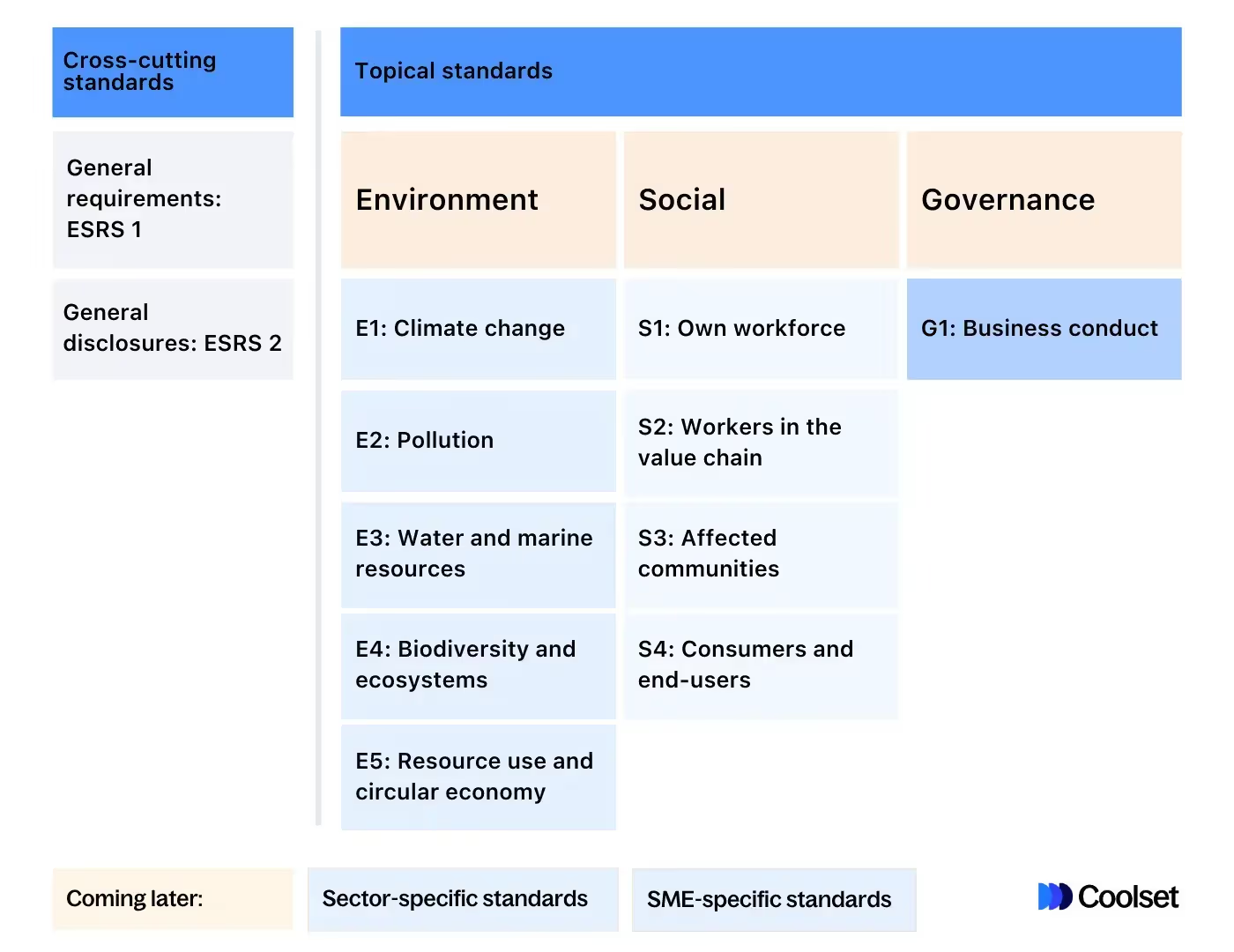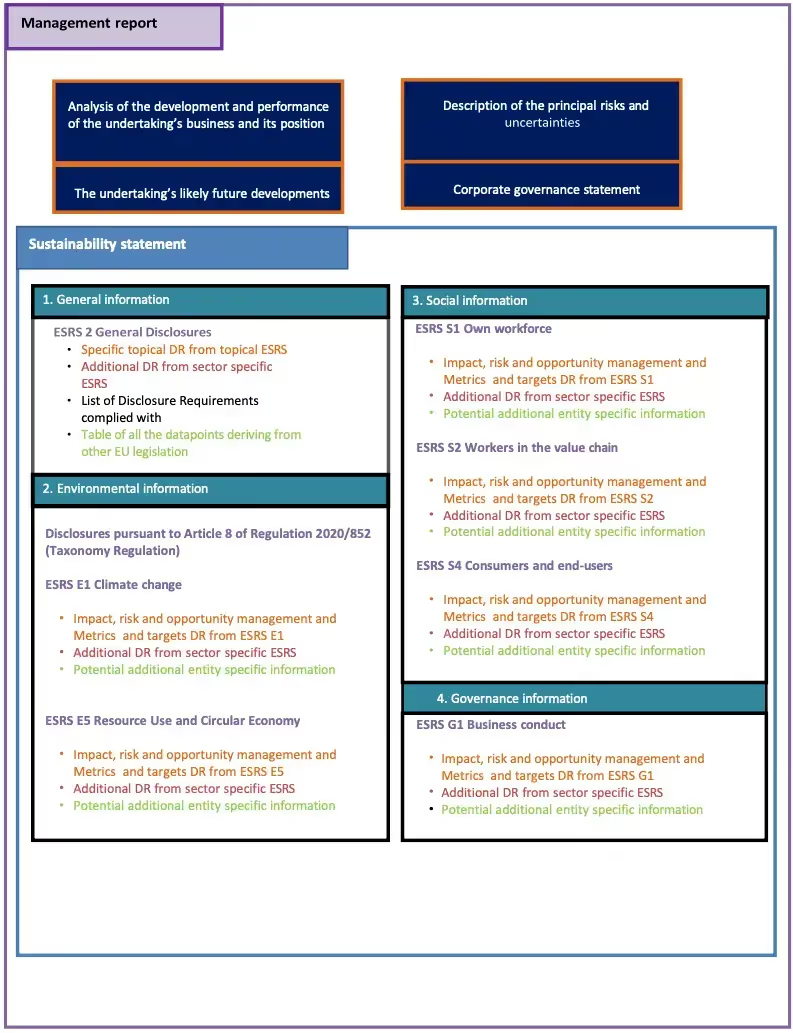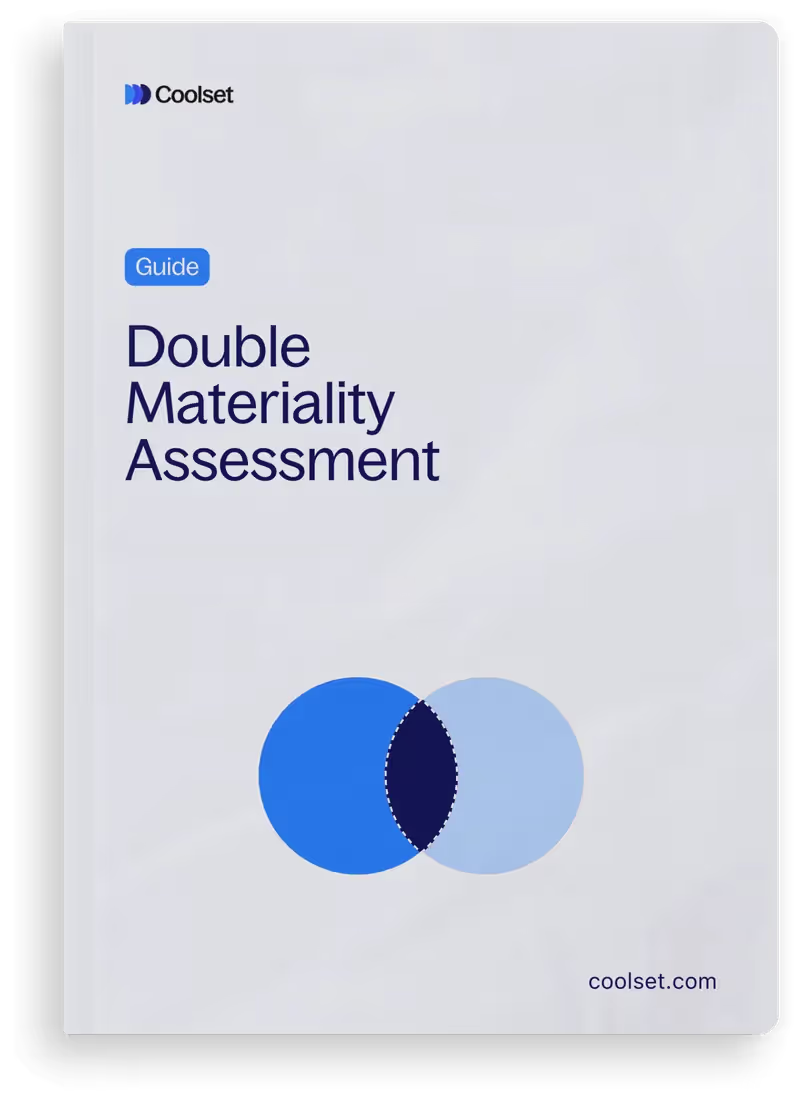Disclaimer: New EUDR developments - December 2025
In November 2025, the European Parliament and Council backed key changes to the EU Deforestation Regulation (EUDR), including a 12‑month enforcement delay and simplified obligations based on company size and supply chain role.
Key changes proposed:
These updates are not yet legally binding. A final text will be confirmed through trilogue negotiations and formal publication in the EU’s Official Journal. Until then, the current EUDR regulation and deadlines remain in force.
We continue to monitor developments and will update all guidance as the final law is adopted.
Disclaimer: 2026 Omnibus changes to CSRD and ESRS
In December 2025, the European Parliament approved the Omnibus I package, introducing changes to CSRD scope, timelines and related reporting requirements.
As a result, parts of this article may no longer fully reflect the latest regulatory position. We are currently reviewing and updating our CSRD and ESRS content to align with the new rules.
Key changes include:
We continue to monitor regulatory developments closely and will update this article as further guidance and implementation details are confirmed.
{{updated}}
With deadlines for the Corporate Sustainability Reporting Directive (CSRD) fast approaching, affected businesses must quickly learn how to align their sustainability reporting with the new standards.
While the recent Omnibus Proposal (Feb 2025) could delay requirements for some companies and raise the reporting threshold to 1,000 employees, the proposal is not yet final. Many companies remain in scope, and voluntary reporting is - more than ever - a strategic move.
The European Sustainability Reporting Standards (ESRS) are the set of guidelines developed under the CSRD that define the reporting requirements for companies. They’re designed to standardize how businesses across the EU report on environmental, social, and governance (ESG) topics.
Writing an ESRS sustainability statement, however, is no simple feat. An ESRS report requires a lot of preparation—usually several months—especially since there are multiple stakeholders involved and over 1,100 data points to potentially disclose.
In this article, we’ll walk through exactly how to write an ESRS sustainability statement according to the CSRD standards. We’ll also reveal how using the right sustainability management software can speed up the process.

To start your ESRS report, it’s crucial to set clear reporting boundaries, time horizons, and carry out a double materiality assessment (DMA). These steps ensure your reports focus on what matters most for your business and stakeholders.
The scope of your ESRS report must match the boundaries of your financial statements, but also extends to your entire upstream and downstream value chain. This means you need to include information on the material impacts, risks, and opportunities (IROs) linked to your suppliers, distributors, and customers.
If you can’t get all the data, you can use estimates like sector averages or proxies. Just make sure to focus on the most important parts of your value chain that affect your business.
For more information, refer to section 5 of the latest ESRS document.
The reporting period for your ESRS sustainability statement must also align with your financial statements. When relevant, you should link past, present, and future data to show how historical information impacts future outcomes.
You should compare data against a base year unless specific ESRS rules say otherwise. You can also include milestones achieved between the base year and the current reporting period if useful.
When preparing your ESRS report, you should address three time intervals:
If industry standards or specific ESRS rules call for different timeframes, you should adjust accordingly. You may also break down the long-term horizon further to clarify your report, or use different timeframes if they better reflect your business dynamics (due to cash flow, business cycles, etc.).
For more information, refer to section 6 of the ESRS document.
After defining the scope and time horizons, the next step is to perform a DMA. This is a mandatory step in the reporting process that helps you determine which of the 10 ESRS topical standards to include in your report.

A sustainability topic can be material from two perspectives:
The process involves assessing IROs across your entire value chain, using both qualitative and quantitative data. Companies should involve internal and external stakeholders to get a full picture of their ESG impacts and consider both short-term and long-term impacts.
The results of this assessment will determine the focus of your sustainability disclosures.
It’s also important to keep in mind that, under the CSRD, your DMA process and its results will be subject to third-party audits. This means it’s essential to clearly document all assumptions, steps, and any thresholds used throughout your assessment.
For more detailed guidance, check out our article on the topic or download our free guide to walk you through the process. You can also refer to sections 3–3.7 of the ESRS document for more information.
{{custom-cta}}
After determining the scope and material issues, the next phase is to ensure that you have the right data for your ESRS sustainability report. This involves conducting a gap analysis to identify missing data and then gathering the necessary information on your material topics.
A gap analysis helps you assess whether your company is currently collecting all the required data for each material sustainability topic identified in your DMA. This step is crucial for organizations new to sustainability reporting or those transitioning from frameworks like GRI or TCFD.
This internal outreach will ensure that all necessary departments are involved in providing the relevant data points for the report.
Once the gap analysis is complete, the next step is to collect data on each material topic identified. The ESRS provides specific instructions on how to report each indicator, ensuring comparability across industries and periods.
Some data may already exist, especially in larger organizations with established systems. For new or emerging topics, companies might need to set up new data collection processes or refine existing ones. Implementing CSRD compliance software like Coolset can help streamline this process and ensure data consistency across departments.
After collecting your data, it's time to organize the data for each material sustainability topic identified.
The CSRD requires companies to submit sustainability reports in .XBRL, a format that is both human- and machine-readable. Companies must use XBRL’s taxonomy to digitally tag data from over 1,000 data points.
Your ESRS sustainability statement should be a dedicated section within your management report. It should be organized into four sections in the following order:
In the environmental information section, you must add a section about how your operations align with the EU Taxonomy Regulation (Regulation 2020/852).
If your business deems climate change (ESRS E1) not material, you are required to provide a detailed explanation outlining why this is the case. This explanation must be comprehensive and clearly justified, as climate change is considered a critical issue. For other topics, a brief statement will generally suffice.
For each material topic, you must include the Minimum Disclosure Requirements (MDRs) alongside the topic-specific information. If your company has no actions, targets, or policies related to a topic, you must clearly state that.
ESRS 2: General Disclosures must be reported regardless of the DMA. For ESRS E1-5, include disclosures on the process used to identify and assess material IROs.
The below table, as found in Appendix F of the ESRS document provides a sample illustration of how an ESRS sustainability statement could be structured. It assumes that biodiversity and ecosystems, pollution, and affected communities, are not material.

Your ESRS report must adhere to specific quality standards as outlined in Appendix B of the ESRS document. These standards ensure that the information is both useful to stakeholders and meets the ESRS standards:
As you can see, preparing an ESRS report is a complex, multi-step process that requires months of preparation and input from multiple stakeholders. With penalties for non-compliance reaching up to 10 million euros in Germany, getting it right is crucial.
That’s where the right software can make all the difference.
Coolset’s sustainability management and compliance software automates the entire process of writing your ESRS sustainability statement.
Our platform uses pre-built surveys to guide you through each step of the DMA, with the results displayed on an easy-to-read materiality matrix. Based on these outcomes, the software unlocks only the relevant ESRS disclosures, so you focus on what’s essential and avoid wasting time gathering unnecessary data.
Curated suggested answers further streamline the reporting process, and you can also attach supporting evidence to back up your claims. Once your report is ready, you can export it in the .XBRL format for smooth submission.
Try Coolset for yourself with our self-guided demo below, or request a personalized walkthrough with one of our product experts today.
Download our free guide to kickstart your CSRD journey.
